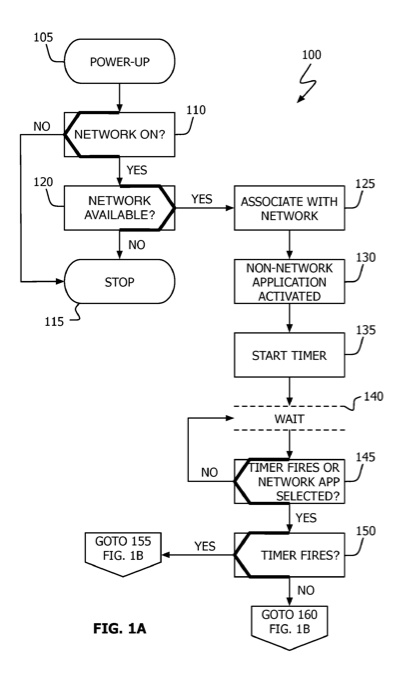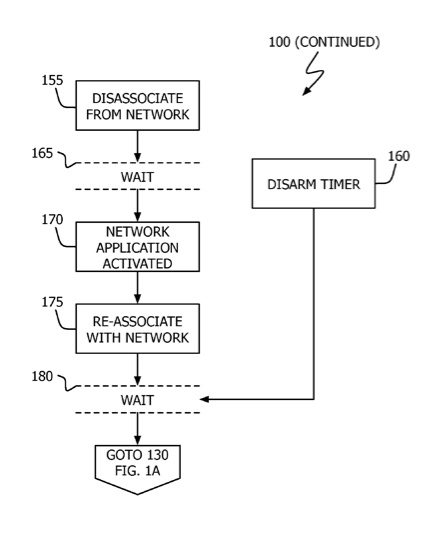A new patent (number 20120008538) for "mobile network device battery conservation system and methods" at the U.S. Patent & Trademark Office shows that Apple is working on ways to improve battery life for its devices that can connect wirelessly.
Per the patent, the battery life of a mobile device operating in a wireless network environment is extended by terminating network communication activities after a specified period of time. Network communication activities may be restored when any one of a specified number of user actions are detected. The inventors are Eric Albert, Nate Begeman, Evan Doll, Charles Dominguez, Scott Herz, Dan Keen, David Myszewski, Mallory Paine and Rob Yepez.
Here's Apple's background and summary of the invention: "The invention relates generally to mobile wireless devices and, more particularly, to a system and methods for extending the battery life in a network capable mobile device. As used herein, the term 'network' refers to those networks designed to use any one of the family of IEEE standards for wireless local area networks that extend the 802.3 (wired Ethernet) standard into the wireless domain.
"The use of wireless mobile devices as a means for communicating via the Internet and local intranets is becoming ubiquitous. The popularity of such devices has increased in part because they may be used whenever and wherever one chooses, as long as there is a wireless access point with which to make the connection.
"Even in the absence of manifest or purposeful 'use' by the user, a mobile device connected to a wireless network periodically communicates with it's local access point. This communication requires the periodic transmission of high power radio signals which, in turn, imposes a significant energy drain on the mobile device's battery. Such background activity leads to shortened battery life.
"In view of the above, there is a need to provide an effective system and method(s) to address the battery drain phenomenon which, at the same time, does not significantly detract from the user's experience of using the mobile device.
"In accordance with the invention, the battery life of a network-capable wireless mobile device is extended by selectively terminating the device's communication link ('association' with a network and re-establishing the link as needed. In one embodiment, the device's communication link is terminated after a specified interval in which no user action results in an application that needs or uses the network communication link.
"Illustrative applications that can result in network access include, but are not limited to: Internet browser applications such as Internet Explorer, Safari, Firefox and Netscape; messaging applications such as Apple Inc.'s iChat, AOL Instant Messenger, Yahoo Messenger or any ICQ-like program; communication applications, such as Microsoft Outlook, Apple Inc.'s Mail, or other mail or messaging programs; virtual information monitor applications such as Apple Inc.'s Dashboard or other applications that employ GUI widgets to provide networked-sourced information to user; antivirus software such as that offered by Norton or McAfee; anti-spam software; spyware detection software or other system health software that require definitions from online sources. (Illustrative applications that typically do not result in network access include, but are not limited to, address book or contact applications, calculator applications, non-network audio playback applications, drawing applications, photo applications, word processing/text editing applications, and non-network calendar applications.) The specified interval may be a preset fixed interval, a user-specified interval, an interval based on the device's network (or application) usage patterns or a combination of these approaches.
"In another embodiment, the specified interval may be extended by temporarily pausing a timer used to account for the specified interval during a background process's utilization of the device's established communication link. In this approach, a background process's use of the device's communication link may be made transparent to the mechanism used to selectively terminate the device's communication link."














